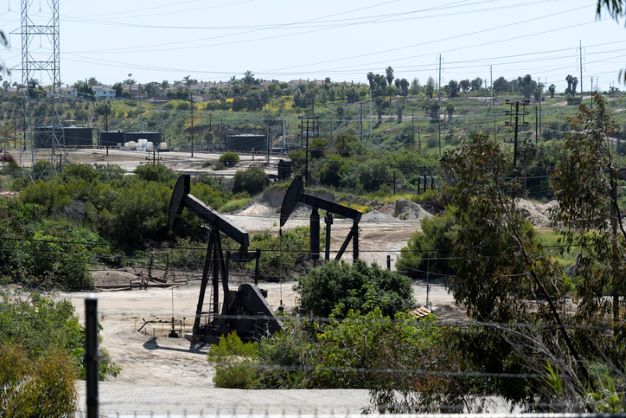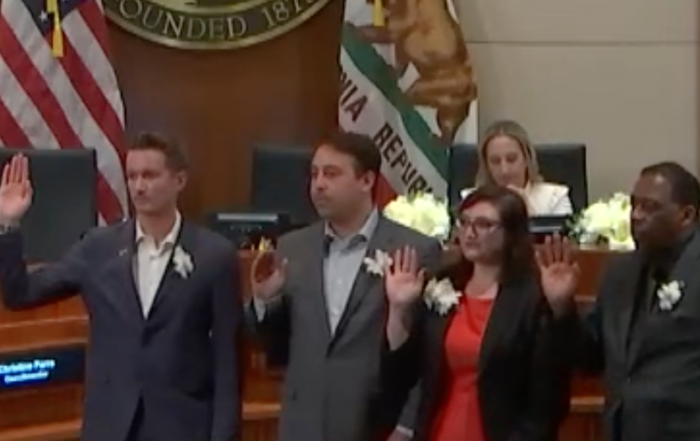The California Air Resources Board (CARB) has announced they will study air quality in the communities surrounding the legendary Inglewood Oil Fields (IOF) made famous by movies like Beverly Hills Cop II and L.A. Confidential. Commuters who use La Cienega to get to LAX know them well. The agency hopes to have two stationary monitoring trailers placed in the IOF by the end of 2022 to begin a 12-month study.
In a report explaining the testing methodology CARB will use, dated June 7, the agency says it determined the location of the two stationary monitoring sites, “Based on their ability to represent the overall impacts of pollution sources within and around the communities while considering operational logistics, such as site access, electricity, and space for the stationary monitoring trailer and associated accessories.” The sites selected were Marycrest Manor, a skilled nursing facility based in Culver City, and another that borders the IOF adjacent to a park, known as the Sentinel Peak site.
The agency will also use mobile monitoring of sites in communities affected by the IOF, including but not limited to, Baldwin Hills, Culver City, Ladera Heights, Village Green, and View Park-Windsor Hills. The mobile monitoring will be via a car (identified as a Toyota Highlander Hybrid) equipped with, “equipment to measure CH4, H2S, O3, NOx, BTX*, a global positioning system (GPS), meteorological data (temperature, relative humidity, wind speed, and direction), and a camera to record the vehicle’s location and surroundings.”
When asked what they hope to report or expect in the study’s results, a representative with CARB simply said, “The study is designed to provide a better understanding of community exposure to air emissions from all sources. The final report will be based on analysis of all data collected during the monitoring effort.”
CARB calls the IOF, “One of the largest contiguous urban oil fields in the United States and a source of domestic oil and natural gas.” They describe the communities affected by the IOF as being located, “in a unique urban environment in terms of air pollution sources. In addition to typical urban air pollution sources, such as on-road vehicles.”
The agency also says the monitoring will be “intensive” and, “focuses on pollutants categorized as toxic air contaminants and criteria air pollutants.” In several tables readers can see in the methodology document, CARB says the frequency of monitoring will be daily, weekly, semi-weekly, or monthly depending on the contaminant.
The effort is part of CARB’s Study of Neighborhood Air near Petroleum Sources, or “SNAPS” program. The methodology also explains, “The Office of Environment Health Hazard Assessment (OEHHA) conducts a health risk assessment using the data collected during SNAPS monitoring and prepares a health risk assessment report, which will be incorporated into the SNAPS final report. OEHHA is also responsible for communicating the results of SNAPS health risk assessments to community members and other stakeholders.”
What does this mean in terms of doing anything about this very specific pollution? Will local stakeholders or the state be the ones charged with bringing down dangerous emissions? According to CARB’s spokesperson, “Based on results of the study, CARB will coordinate with the local air district and facility operators to address potential emissions mitigation. CARB may also consider options to address emissions through amendments to current regulations or additional regulations. We will also inform our colleagues at the California Geologic Energy Management Division to pursue under their regulations.”
CARB welcomes feedback on the draft plan by July 31. You can email the agency at [email protected] or call (279) 208-7749.
*Methane, Hydrogen Sulfide, Ozone, Nitrogen Oxides, and Benzene, Toluene, and Xylenes, respectively
Stay informed. Sign up for The Westside Voice Newsletter
By clicking submit, you agree to share your email address with Westside Voice. We do not sell or share your information with anyone.








